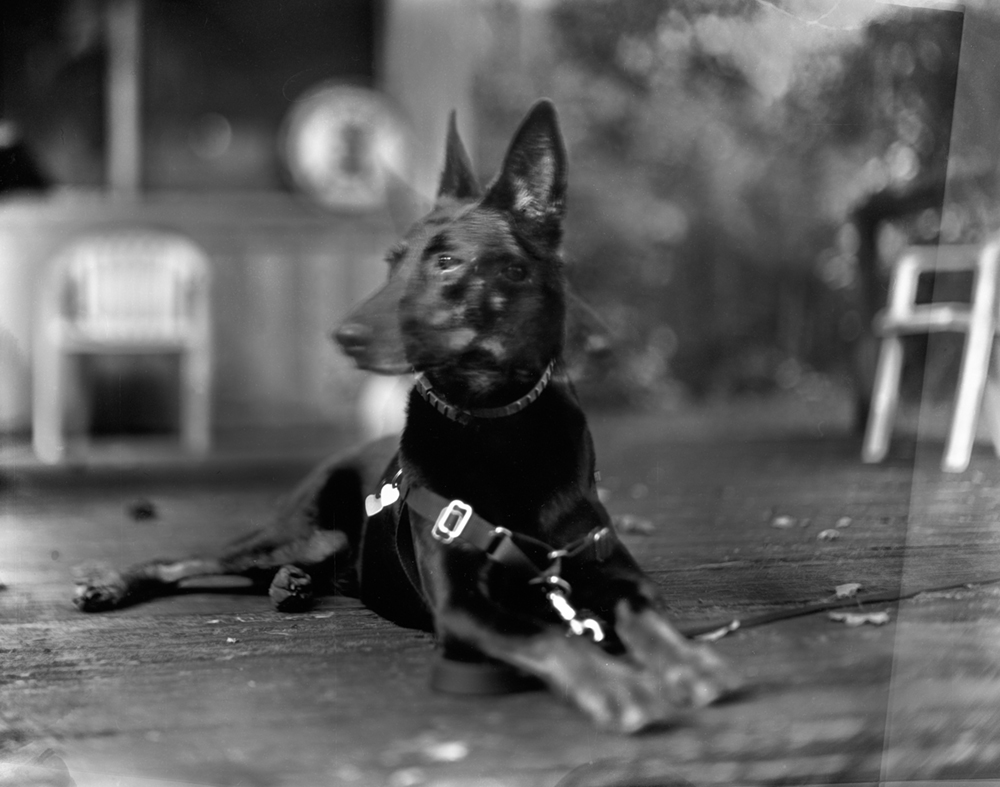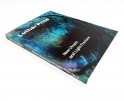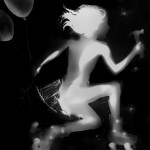Penumbra Foundation / Image Threads LTP: Sara J. Winston and Em White in Conversation
As LTP Photobook Program faculty, I’ve met with artist and current student Em White, LTP class of 2023, twice so far this year on Zoom to discuss her work. Our conversations have transcended talk about photography and books, and have included subjects like the importance of Roky Erickson and our shared love of senior dogs. I was delighted to have the opportunity to ask Em more about her background and how she found her way to LTP.
Sara J. Winston: Thanks for taking some time to chat with me, Em. First things first, could you share some details about what events in your life led you to become an artist, and particularly how those interests or events continue to influence the way you think of the work you make today?

©Em White
Em White: Of course! Thank you for having me! I’m so grateful for the opportunity to share with you, especially as a fan of your work as well!
Where to begin…I grew up in rural Virginia with my four brothers and we were given a lot of freedom to explore and play unsupervised– we roamed the woods, walked down to the river- spending most of our time outdoors, without the presence of authority or adults really– it led to me dreaming a lot, imagining a lot and finding purpose in creativity. It also led to me feeling most comfortable when a little isolated and immersed in nature. I never set out to be an artist, I thought I would be an archeologist or a marine biologist, I was always fascinated by and curious about other worlds and those seemed like careers that would let me explore them. I fell in love with photography before I even made a photograph, I was always captivated by photographic images and the stories I could make up about them, or the memories they encouraged me to revisit. I made my first photograph when I was 11, with my older brother, the moon rising over our family farm at dusk…I was excited to document the purple sky, and didn’t really connect the dots that the darkroom photos my brother was making were only black and white. Ever since then, it was a medium that spoke to me, it enabled me to make images that represented the ideas and feelings I wanted to share. I grew up with my stepdad Wayne as an example of a successful self-taught artist– he converted the barn on our property into a large stained-glass studio, where we all worked growing up. So in a sense, in my family there was a bit of the assumption that art wasn’t something you went to school for and if any of us would become an artist it would be by our own motivation and learning. I ended up studying Sociology and Spanish literature in undergrad– ultimately accelerating my graduation to pursue photography, something I viscerally knew I wanted to focus on as soon as possible. I don’t regret not going to art school, I believe what I studied influenced me in important ways and changed how I engage with the world around me. Ever since, for the past decade I’ve just been puttering about with a camera, following what feels good, exploring, experimenting, playing. I think many of those relationships with art making can be traced back to how I was encouraged to approach the world as a kid– self directed, curious and full of play. I continue to feel more comfortable when a little alone, so a lot of my work is very quiet, still, looking closely, another parallel to growing up in the sticks.
SJW: I think there’s such importance to holding on to childhood curiosity, play, spirit, before we’re too influenced by culture, platitudes, and the insecurities that the world foists upon us. I love thinking about you and your siblings puttering around in nature, making your own rules and realities. I think that really translates and continues to shape the work I’ve seen you editing through in the Long Term Program course, where we met. I mean, we don’t need to talk about the “aboutness” of it, but it–the images–have always felt to me like an ongoing search for a place, where a feeling lives, whether that place is where the moon shines in a puddle or stream, where the James River has a strong current, or where the camera captures the strange and magnificent aura of a living being, like a dragonfly or a two headed dog.
In terms of your photographic education, outside of institutions, what was your exposure, no pun intended, to photography? Books, exhibitions, family?
EW: Outside of family albums, my access to photography was pretty limited as a kid- a computer with internet didn’t come to our home until I was in middle school, and even then, it was dial up in rural Virginia, you can imagine how slow it was. I would say my photographic education began with printed publications—When I was a preteen my stepmom came into my life and exposed me to the idea of photography as something more than family photos, as art. She showed me Robert Doisneau and Francesca Woodman and gave me all her used copies of The Sun literary magazine and Lenswork. I’d pour over these old publications, cutting out the photos I loved, turning them into giant collage panels that covered my bedroom walls. It’s funny, looking at those collages today, I recognize some of the photos as from artists I’ve grown familiar with– but at the time I had no idea who they were, I didn’t care, it was only about the images. I was educating myself in what compelled me, what I enjoyed, the context or the names didn’t come until later.
I think a lot of my learning has come from being in community with others who are creating. I moved to Madrid in my early 20’s and naturally used photography as a way to make friends, and connected with other folks who used the medium in different ways than me– it really opened up my eyes to how expansive photography can be. While I was there, there was a vibrant anti-establishment counterculture and I found myself really invested in the DIY art and music community- I feel like hanging out with people making work I was interested in, people rejecting established norms, being exposed to new ways of thinking, was an important form of artistic education for me– seeing what resonates with others, experiencing the visceral impact art can have across culture, language, belief etc…
When I was trying to start a career in photography, despite the fact that I felt mostly confident in the photos I was making and my artistic voice, I felt pretty insecure about my lack of formal education in art. I was at a loss for how to “prove” my knowledge without that degree: I didn’t know how to access industry information, it all felt pretty opaque– my response to that was to work for an established photographer, to learn by observation and to later try on my own. I’m principally self taught– my learning hasn’t been the most efficient but it’s been very personal and empowering. I repeated this pattern a few times, working for someone I respected and hoped to learn from. I gained powerful mentors and inspiring examples of different art practices, ways of running a studio, how to engage with a living archive etc… The knowledge I gained wasn’t process-oriented or instructional, rather it was more about being exposed to someone’s artistic philosophy and seeing how they apply it.
SJW: How did you find your way to the Penumbra Foundation in New York? And in addition, what piqued your curiosity to enroll in The Photobook Long Term Program?
EW: I still can remember so clearly the first time I visited the Penumbra Foundation. I was living in Virginia at the time, this was maybe 6 or 7 years ago now, and I had first discovered them online. I was practicing wet plate collodion on my own, working out of a darkroom in my car. I had never met anyone else doing wet plate and when I found out there was a whole professional studio dedicated to practicing tintypes, I was starry eyed with awe. The first chance I had to be in New York, I made a point to visit Penumbra. I didn’t call ahead or anything, just showed up and buzzed the doorbell and thankfully caught Geoffrey Berliner on his way out. He turned right back around and gave me a tour of the facilities, the studios, even gave feedback on some of the work I’d been making. I was so taken by his generosity and the trip reinforced my appreciation for what Penumbra was working towards and the community they were building.
Fast forward a few years, I’ve stayed connected to what they’re up to, and now teach there from time to time. I’ve been wanting to make a book for a few years– responding to this unsettled feeling with my work, like an unidentified lack of resolution on how to share it holistically. With exhibitions underwhelming me, I felt a book could get a little closer to what I was looking to share. Of course, in a busy world, it’s really easy to push off projects– especially rather nebulous, personal, expansive projects that feel important to do right, that demand time.
I wanted to do this program a few years ago when I first heard about it, but made excuses and this year felt like the time to push myself to have some built-in accountability, so I applied to the Long Term Program course. I don’t have a cohesive group of peers to discuss my work with, so a big part of my interest in this program was looking to be in conversation with others about my work, to have a more formal group setting. Penumbra works with so many artists who I respect, so I felt confident that the instructors, as well as the other students in the class, would all likely be someone I could learn from and connect with– and I think that’s panned out. I didn’t enroll looking for a deliverable result like a publish-ready book per say, but rather, I wanted to get the ball rolling on a long-overdue project and to have some accountability to help me engage with my work in a more rigorous way. I also hoped to gain a little insider insight into how publishing works, what some of those industry practices are that feel so opaque and inaccessible. In summary, community and access to learning were at the core of my motivations to enroll.
SJW: I’m glad you’re here! I’ve enjoyed seeing your work move forward as you’ve developed multiple iterations and book drafts this year. I look forward to our next meeting; I look forward to our next conversation.
Em White is an American photographer and visual artist, specializing in vintage photographic processes and large format work. Raised in rural Virginia, much of her work emphasizes personal relationships to land and the ways in which environment informs the emotional self. Drawing on her background in sociology, White examines how natural environments function as community spaces and the ways that they can connect and transform. Primarily self taught, White’s approach to photography has been shaped by personal experimentation and opportunities to learn from established artists. She works with analog processes, valuing the ability to produce by hand, for the slow movement they require and the present state of mind they demand.
Today she lives and works in Richmond, Virginia with her two dogs, Sadie and Gus. She runs a portrait studio where she collaborates with members of the community to produce tangible works in a digital era. She teaches at Virginia Commonwealth University and various community arts organizations. White has been exhibited in numerous group shows and her debut solo exhibition High Water took place at Candela Gallery in 2021.
Follow Em on Instagram @_slowmedown
Sara J. Winston is an artist based in the Hudson Valley region of New York, USA. She works with photographs, text, and the book form to describe and respond to chronic illness and its ongoing impact on her body, mind, family, and memory. Sara is the author of several photobooks, among them Shades (collaboration with Aaron Canipe & Nat Ward; Push Pull Editions, 2023), A Lick and a Promise (Candor Arts, 2017) and Homesick (Zatara Press, 2015). Sara is the Photography Program Coordinator at Bard College; on the faculty of the Penumbra Foundation/Image Threads Long Term Photobook Program (LTP); Adjunct Professor at Syracuse University; a contributor to Lenscratch; and a member of Storm King Art Center‘s Accessibility Advisory Group. On June 29, 2023, her long-term project about multiple sclerosis care, Our body is a clock, was adapted and published as an op-ed in the New York Times, titled ‘My body is a clock’: The Private Life of Chronic Care.
Follow Sara on Instagram @sarajwinston
LTP Photobook Program is a year-long online course which combines seminars, critiques with guest artists, and one-on-one sessions. Working with several instructors throughout the program, while also receiving assignments and feedback from guest critics, participants will have both continuity and variety of support. The learning process is based on regular production of physical maquettes, which helps participants deepen their understanding of the book form and allow them to continue redefining it for themselves. Reading and writing assignments, as well as individualized exercises throughout the year will develop the skills and knowledge necessary for a photobook maker. While the objective of the course is to have, at the end of the year, an artist book or a physical maquette to present to publishers or to self-publish, participants also establish a practice and a community to support them going forward. The course is presented in collaboration with the Penumbra Foundation in New York City, and Image Threads Collective.
Applications for the 2024 session of the Penumbra Foundation / Image Threads LTP are open until October 6th, 2023. It is free to apply. Learn more and apply here.
Follow LTP on Instagram @photobookprogram
Penumbra Foundation is a non profit organization that brings together the Art and Science of Photography through education, research, outreach, public and residency programs. Its goal is to be a comprehensive resource for photographers at any level, artists, students, professionals, historians, researchers, conservators and curators.
Follow the Penumbra Foundation on Instagram @penumbrafoundation
Image Threads Collective brings together artists, teachers, and bookmakers who are passionate about photographic projects and books, for the mutual exchange of ideas and critical feedback. They partner with students and working artists to produce collaborative workshops, public exhibitions, and long-term mentoring relationships. They are committed to working with and for the communities who host their programming.
Follow Image Threads Collective on Instagram @imagethreads
Posts on Lenscratch may not be reproduced without the permission of the Lenscratch staff and the photographer.
Recommended
-
Luther Price: New Utopia and Light Fracture Presented by VSW PressApril 7th, 2024
-
Artists of Türkiye: Sirkhane DarkroomMarch 26th, 2024
-
European Week: Sayuri IchidaMarch 8th, 2024
-
European Week: Steffen DiemerMarch 6th, 2024
-
Rebecca Sexton Larson: The Reluctant CaregiverFebruary 26th, 2024




























































































